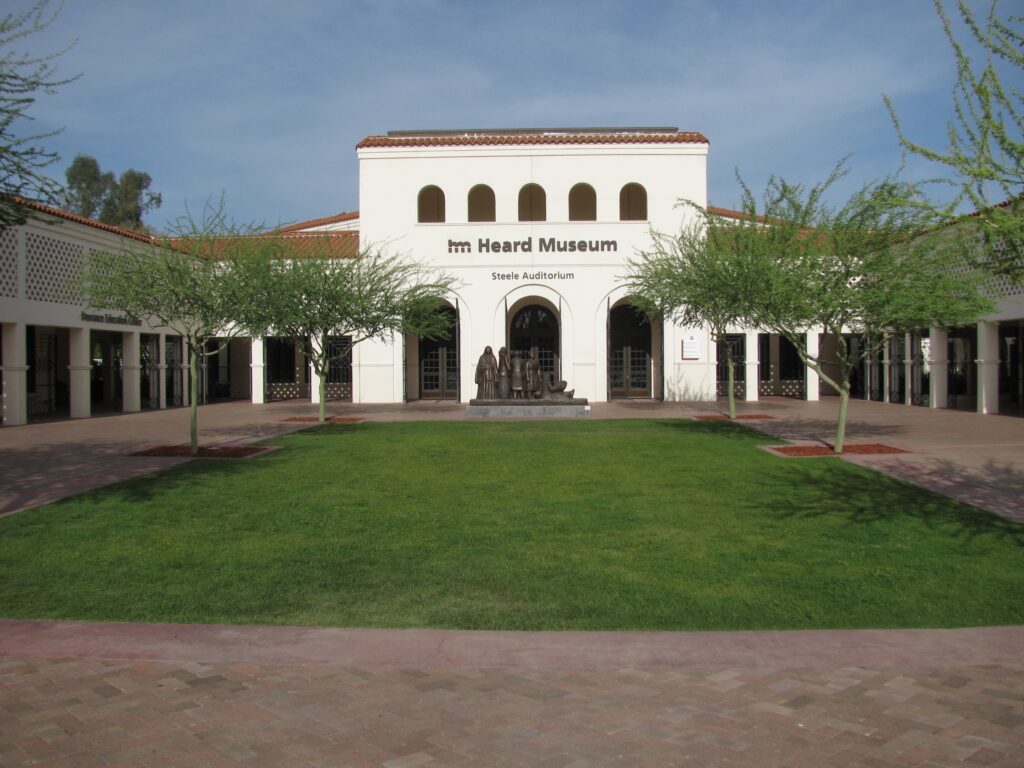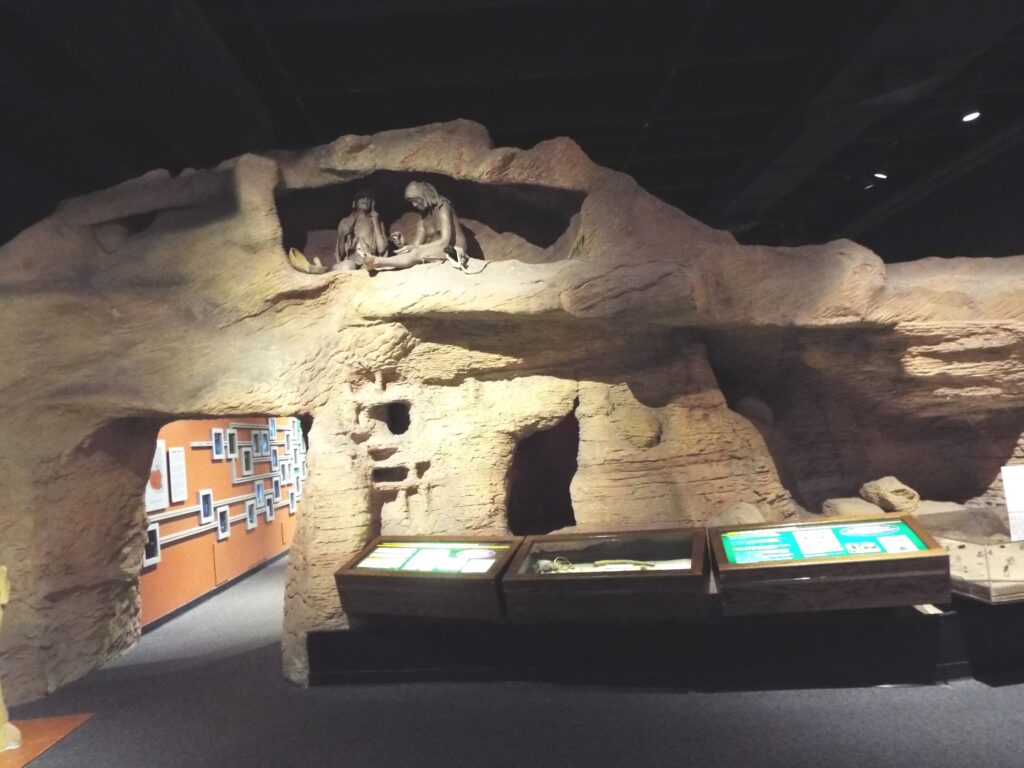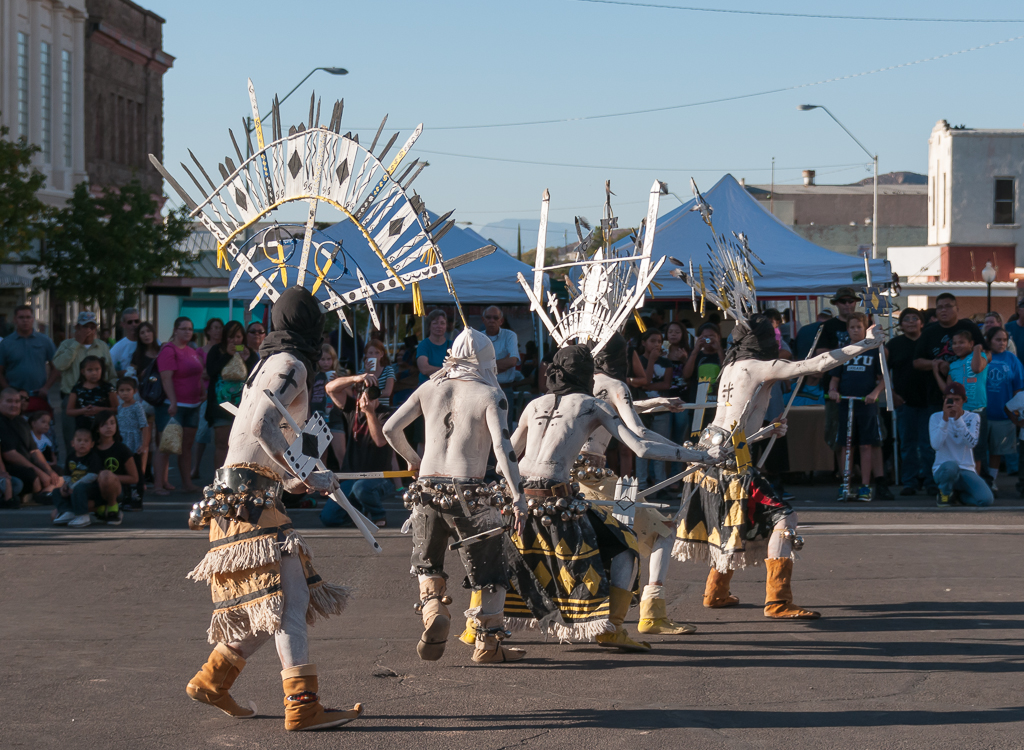11 places around Phoenix to learn about Native/Indigenous history
Here are 11 places around the Valley of the Sun to learn all about the Native people who are still very much a part of what makes Arizona so rich in culture.
Phoenix is located within Native Lands. Well, I guess you can say this about any city in the United States. However, for the most part, Phoenix chooses to not only acknowledge this fact but to celebrate it as well.
How did Arizona remain so rich with Native culture when the majority of states have been so westernized?
You may hear celebrations of “State 48” referencing Arizona’s position in America’s territory claim. It was the last territory on the mainland to become a state—and it was only acquired out of convenience for railways, travel, and cleaner borders. This is a polite way of saying that for the most part, Arizona wasn’t wanted by the government until there was a very apparent need.
Fortunately for us, this led to both American rights getting granted to locals as well as preservation of native land. Within our state borders, we have Navajo Nation and reservations aplenty. So many that between native and government land, only 18% of Arizona can be privately owned! Now, back to Phoenix.
Phoenix may seem like any other metropolitan area full of financial promise, convenient accommodations, and opportunities. While all of this is definitely true for our Capital—just look at how many transplants there are!—Phoenix is also a center for historical culture unlike anywhere else. To learn more about the rich indigenous history of Arizona, here are eight places in Phoenix (plus three day-trip-worthy destinations) to explore Native culture.
Please note that each location references native Americans with different terminology; the terminology used in each description will match that of the place.
Top 8 places to learn about Native/Indigenous American history in Phoenix
1. Heard Museum
The Heard Museum is known well beyond the Arizona borders as an excellent place to learn about American Indian culture. Exhibitions here contain American Indian art, from traditional to contemporary. View paintings, drawings, fashion, jewelry, pottery, textiles, sculptures, and more. When you have perused thoroughly, stop in the cafe for a bite and then look around the gift shop for an authentic souvenir.
Entry fee: $9/youth, $22.50/adult (or free with a Culture Pass)

2. S’edav Va’aki Museum
Formerly The Pueblo Grande Museum, S’edav Va’aki Museum seeks to “be recognized as the gateway to the cultural history of the Phoenix area.” Established by the city of Phoenix, this museum focuses on educational programs that highlight preservation and the presentation of cultural materials.
Please note that there is a scheduled closure on July 15 for renovations, but there are virtual programs available on the website until the projected reopening in the fall. City-maintained museums such as this one are a great place to start as they have access to even more resources than many private museums do.
Entry fee: $6 (or free with a Culture Pass)
3. The Fry Bread House
Enjoying the food of another culture is a fun and delicious way to learn about said culture. Open Monday through Saturday, this award-winning restaurant is the best way to try Native American food, specifically fry bread. Akin to fried pita bread, fry bread can be eaten savory or sweet and is a traditional staple for Native culture.
The menu includes fun ways to eat fry bread from tacos to burgers to sweets, and if fry bread isn’t your thing, try one of the many stews or tamales. Regardless of what you try, your tastebuds will thank you. Now, be right back, gotta go eat fry bread before the drool wrecks the keyboard.
4. Phoenix Indian Center
Now that the stomach is full, it’s time to talk about the Phoenix Indian Center. It is the oldest nonprofit American Indian organization of its kind in the U.S. as a result of Phoenix becoming a prominent “relocation city.” If you are not quite sure what that means, this center is a great place for you to start your journey of learning about the culture and history of how Natives were either forced to assimilate to the new American ways or relocate to designated tribal lands.
The Phoenix Indian Center may be a result of a darker history of colonization, but it exists today to connect tribes, bridge the gap between modernity and tradition, and act as a hub that can preserve culture for natives (there are even language courses available) and educate non-natives about that culture. Check out one of the several workshops, classes, and webinars to fully learn about the culture that comprises the Capital of the Grand Canyon State.
5. Hieroglyphic Trail
Located in Gold Canyon in the Superstition Mountains, the Hieroglyphic trail is a moderately easy 1.4-mile hike with a high payout. Water pools, views, petroglyphs, and the legends of the Superstition Mountains make up the magic of this trail, lending not only to a true Arizona hike, but also a true exploration of Native history.
The petroglyphs are believed to be left by the Hohokam people, a civilization that thrived in central AZ sometime between 200 and 1400 AD. The exact meanings of the petroglyphs are open for interpretation, but are nevertheless important to the archaeological history of the Phoenix Metropolitan area.
While it is free to hike this trail, be sure to preserve this trail for future generations by practicing the “leave no trace” rule; whatever you pack in, be sure to pack out. Also, please be sure to bring water with you while hiking and do mind the forecast.
6. Arizona Museum of Natural History
Native Cultures of Western North America is an exhibit at this museum that explores how dozens of different native tribes lived in the Western part of our country. There are over 500 items piecing this history together, all donated by Lou and Evelyn Grubb, who spent their lifetimes curating this once-private collection.
This exhibit is an important key to understanding the tensions, favors, lifestyles, and practices that existed between the many different native cultures, a piece of history that is oftentimes overlooked. It is no surprise that the history of people is not so different from the modernity of people.
Entry fee: $9/youth, $16/adult

7. Native Art Market
The Native Art Market has two locations with the same purpose: to provide an environment where Native Americans can sell directly to the public in a mission to create economic empowerment. According to the website, “At both locations you experience the stories, arts and culture of Arizona’s Native American tribes.”
The indoor space, located in Old Town Scottsdale, is open year-round and includes a fun “sip n’ shop” complete with live performances five days of the week. The outdoor space, open on weekends November-March, includes live performances, food, and artists. This is a great place to do holiday shopping while directly supporting Native American work.
Whichever you attend, you will meet many people and see how modern culture has been meshed with Native practice.
8. Superstition Mountain Lost Dutchman Museum
The Superstition Mountains are one of four places that mark the ancestral home of the Apache people. The museum at the Lost Dutchman hosts artifacts, pictures, and art that share “the history, geology, past cultures and enduring local lore” of the Superstition mountains.
Be warned that the museum is located in the remnants of an old mining town and features the Wild West history as well as the native history, complete with pseudo gold panning and shoot-out performances. If you would like a calmer way to approach learning about the Native history in the Superstitions, check out the nearby native plant trail at Lost Dutchman State Park.
Entry fee: $7/adult
Native history locations that are perfect for a day trip
The eight locations above are excellent sources to learn about local and Southwest Native history, but you may find yourself increasingly curious to learn more. Here are three more locations that are under 150 miles from Phoenix, perfect for a day trip or overnight getaway.
9. Besh Ba Gowah
Besh Ba Gowah Archaeological Park and Museum holds “the remains of a large pueblo village constructed by the Salado culture who occupied the region between 1225 CE and 1450 CE.” The entry allows you to walk around these remains (a few buildings have been reconstructed for a more pristine observance), view native plants, try your hand at grinding corn, explore a museum with authentic artifacts, and watch a brief documentary. There is also a small kid-friendly gift shop to top the visit off.
In December, there is an excellent light show with paper lanterns. This is worth a visit, just be aware that if you plan to visit during the week, there are planned closures of US 60 from Tuesday to Thursday, 9 a.m. to 2 p.m.
Entry fee: $5 (or free with a Culture Pass)

10. APACHE JII FESTIVAL
This festival sits just outside of the San Carlos Reservation in Gila County and includes native food stands, live music, art, skateboarding, and more. It is free to attend and makes for a very fun and informative afternoon. Just be sure to wear your sunscreen because the elevation is about 2000 feet higher than in the valley (which means you will be even closer to the sun!).

11. Museum of Northern Arizona
The Museum of Northern Arizona sits at the base of the San Francisco Peaks, on homelands sacred to Native Americans throughout the region. The Museum “honors their past, present, and future generations, who have lived here for millennia and will forever call this place home.”
This museum is located in Flagstaff and celebrates the rich beauty, heritage, and culture of the Southwest through its several themed exhibits and events. June celebrates the Heritage Festival by hosting a gathering of the People of the Colorado Plateau that includes art, food, dances, and more. Later this summer is a medicinal garden tour. The fall offers tours of specialized collections.
The Museum of Northern Arizona is an excellent place to visit, any time of the year, to get a taste of the history that has led to the beauty of where we call home.
Entry fee: $10/youth, $15/ adult (or free with a Culture Pass)
Closing Thoughts
Arizona has so much to offer in terms of native and historical education; these are but a few local locations to get you started on your journey of understanding everything that went into establishing what we call home today. Understanding the past is an important part of protecting the future. Understanding your neighbor’s culture is an important part of living with empathy, understanding, and ultimately, peace. Let’s do our part in learning about what makes the land surrounding us so fascinating, mysterious, and rich in culture.
Happy learning!



